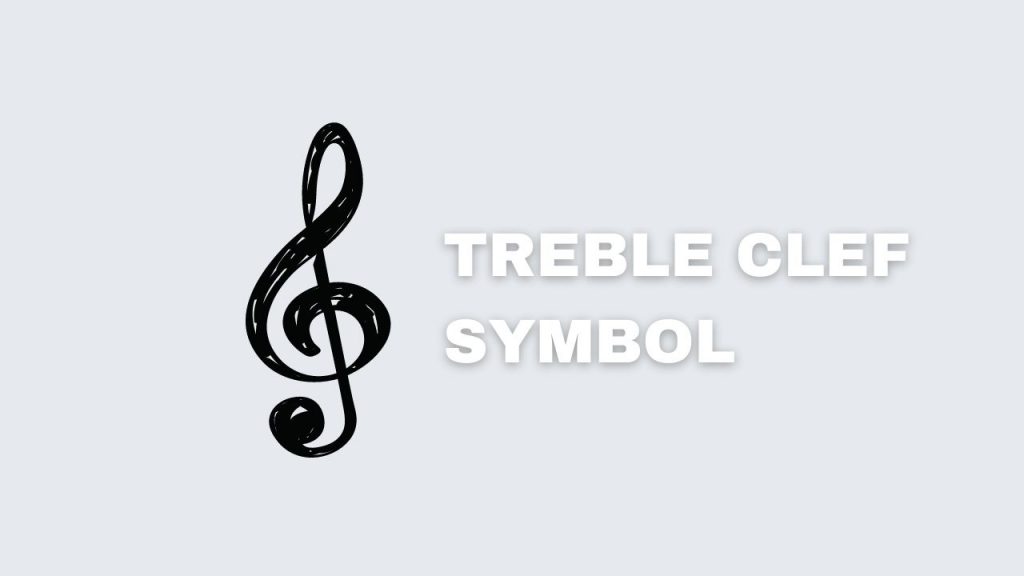Identifying the treble clef also called “G clef” is crucial because it defines the key of the notation. If you are worried that you won’t be able to spot it, don’t worry. The good news is beginners and music students alike can spot the treble clef because most popular songs typically begin with it!
Treble Clef: What Is It?

The G clef resembles the letter “G” to a degree, at least in Gothic. This clef indicates the music is based around the G note on the musical staff. When counting the lines of the staff, the bottom is line 1, which corresponds with the E note. Line 2 is G, which the G clef curls around.
Why Does the G Clef Exist?
The G clef is a reference point for musicians to identify how notes correspond with the staff. On a piano, middle C is found in the middle of the keyboard, four notes before the G used for a treble clef. One way to understand the placement of this clef better is to remember the saying “Every Good Boy Does Fine.”
The first letter of each word from the old phrase represents an ascending note on the staff. In between staff lines are spaces where notes also exist. Here are G clef notes that correspond with staff lines:
5. F
4. D
3. B
2. G
1. E
What Instruments Read G Clefs?
Treble clef notes are commonly found in notation written for high-pitched instruments or those with a wide range like piano or guitar. Other instruments that work well with treble clefs include violin, trumpet, clarinet, flute, and many more.
How Do You Identify a G Clef?
Look for the clef that appears at the beginning of a musical piece. The G clef is the most recognizable of clefs, as most people have seen it all their lives. Moreover, no other clef looks like it, so it’s easy to spot. It almost looks like the numeral 6 with extra curves.
Treble Clef vs. Bass Clef: What’s the Difference?
While the treble clef alerts the musician line 2 is G, the bass clef circles around line 4 or second from the top. With this change comes different notes for line numbers. The bass clef looks like a backward C followed by a colon. It turns line 4 into the F note, which the colon is based around. The reason for this change is to display low notes more easily, instead of creating extra lower staff lines. The bass clef provides notation for stand-up bass and electric bass guitar players.
Conclusion
Part of learning musical notation is understanding clefs placed at the beginning. The clef signals where specific notes are placed on the staff. While it may sound complex to beginners, remember there are easy ways to remember anything about music theory. Notes move in alphabetical order. The clef determines which notes match specific staff lines. Ultimately, most piano and guitar songbooks present notation based on the treble clef.
Table of Contents






